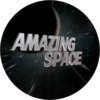Members Can Post Anonymously On This Site
Ariane 6 pre-show: wet dress rehearsal complete
-
Similar Topics
-
By NASA
NASA/Frank Michaux Technicians from NASA and primary contractor Amentum join the SLS (Space Launch System) rocket with the stacked solid rocket boosters for the Artemis II mission at NASA’s Kennedy Space Center in Florida on March 23, 2025. The core stage is the largest component of the rocket, standing 212 feet tall and weighing about 219,000 pounds with its engines. The stage is the backbone of the rocket, supporting the launch vehicle stage adapter, interim cryogenic propulsion stage, Orion stage adapter, and the Orion spacecraft.
Artemis II is the first crewed test flight under NASA’s Artemis campaign and is another step toward missions on the lunar surface and helping the agency prepare for future human missions to Mars.
Image credit: NASA/Frank Michaux
View the full article
-
By European Space Agency
Europe’s newest rocket, Ariane 6, took flight for the second time from Europe’s Spaceport in French Guiana at 13:24 local time on 6 March (16:24 GMT, 17:24 CET). This was the first commercial flight for Ariane 6, flight VA263, delivering the CSO-3 satellite to orbit. Arianespace was the operator and launch service provider for the French Procurement agency (DGA) and France’s space agency CNES on behalf of the French Air and Space Force’s Space Command (CDE).
View the full article
-
By European Space Agency
Europe’s newest rocket, Ariane 6, took flight for the second time from Europe’s Spaceport in French Guiana at 13:24 local time on 6 March (16:24 GMT, 17:24 CET). This was the first commercial flight for Ariane 6, flight VA263, delivering the CSO-3 satellite to orbit. Arianespace was the operator and launch service provider for the French Procurement agency (DGA) and France’s space agency CNES on behalf of the French Air and Space Force’s Space Command (CDE).
View the full article
-
-
Check out these Videos




Recommended Posts
Join the conversation
You can post now and register later. If you have an account, sign in now to post with your account.
Note: Your post will require moderator approval before it will be visible.